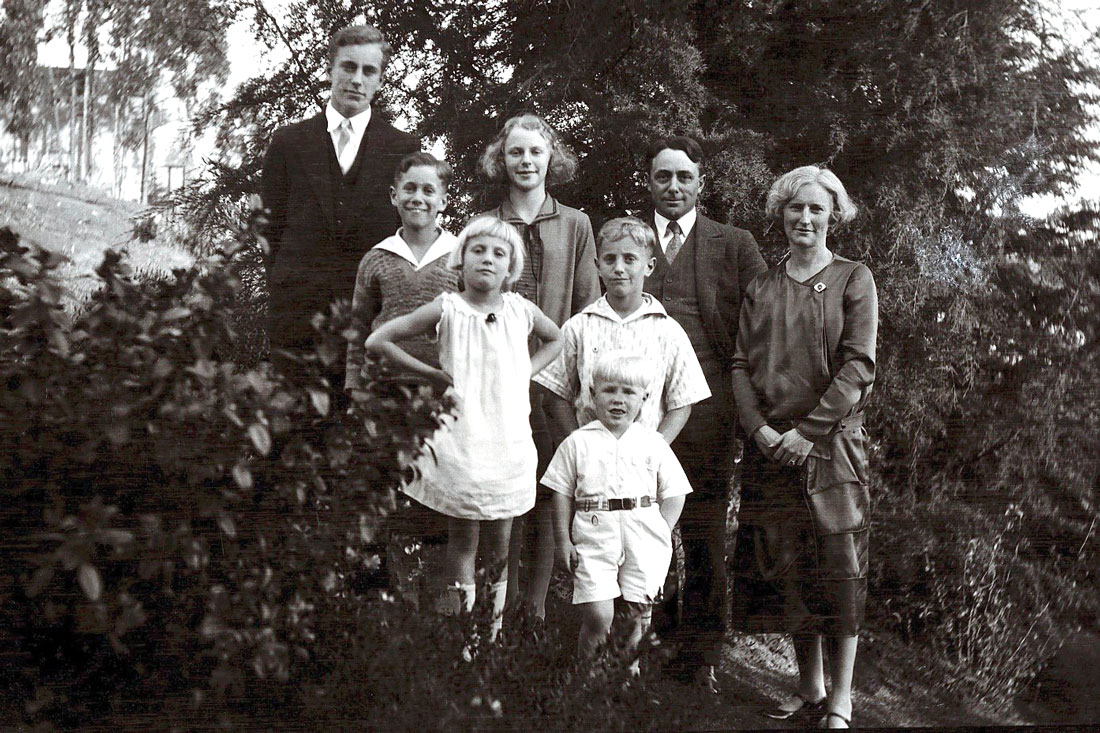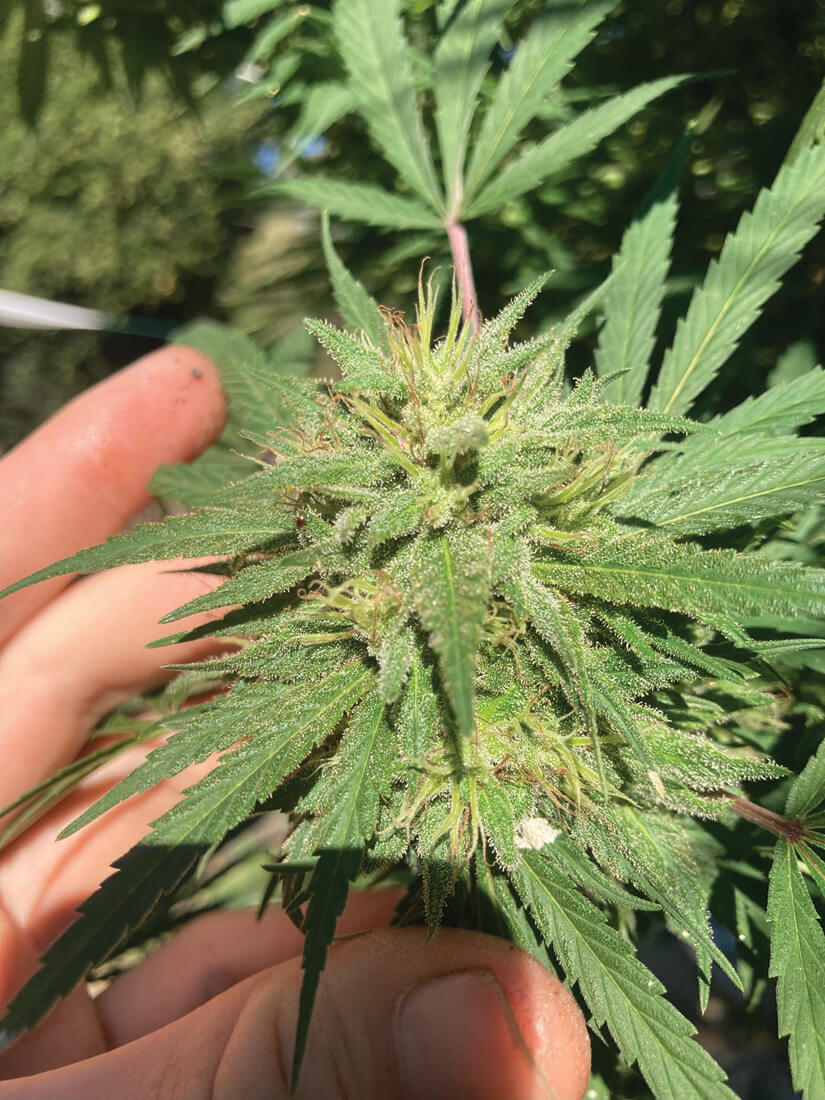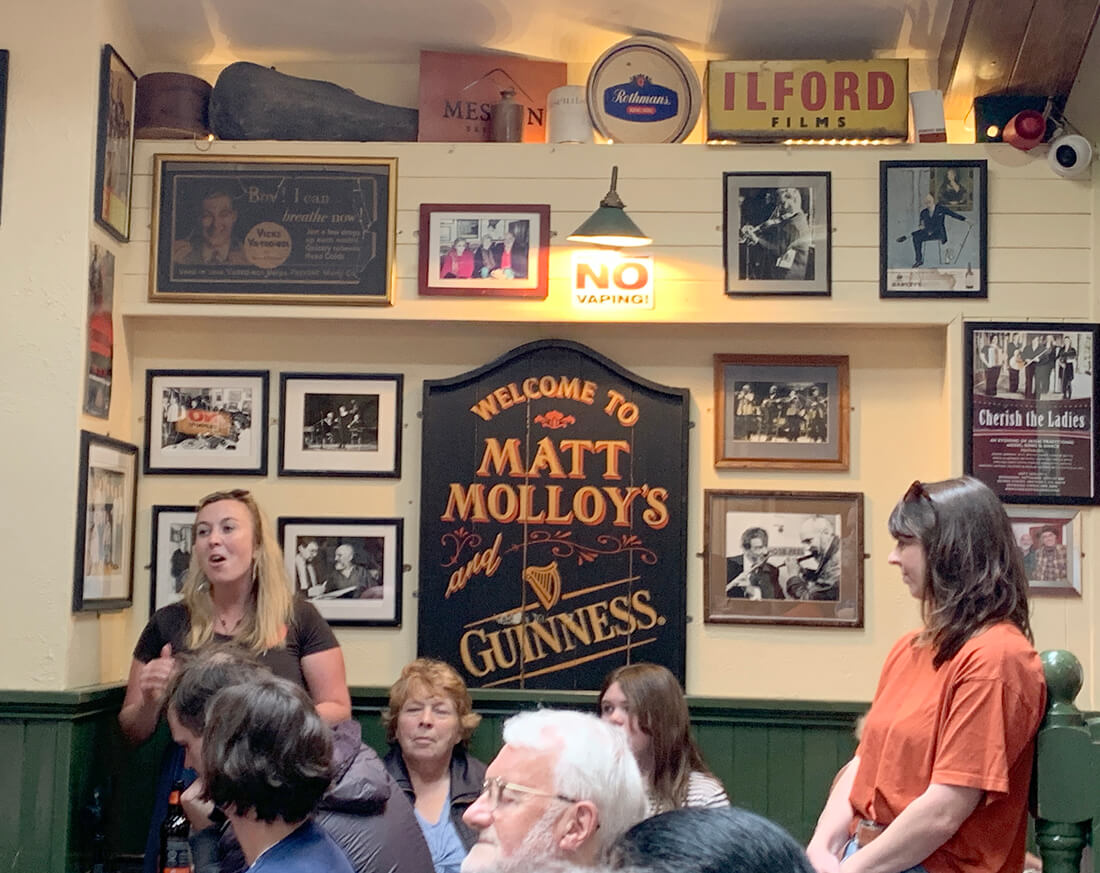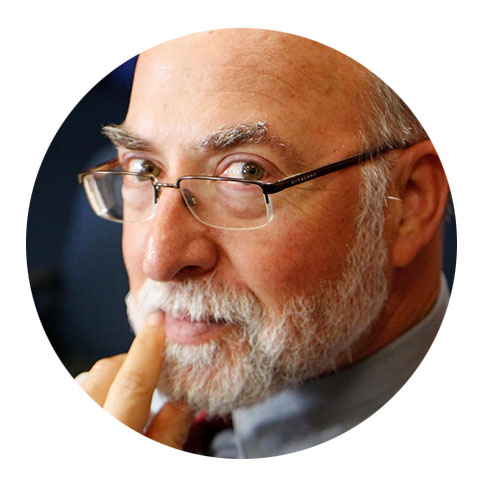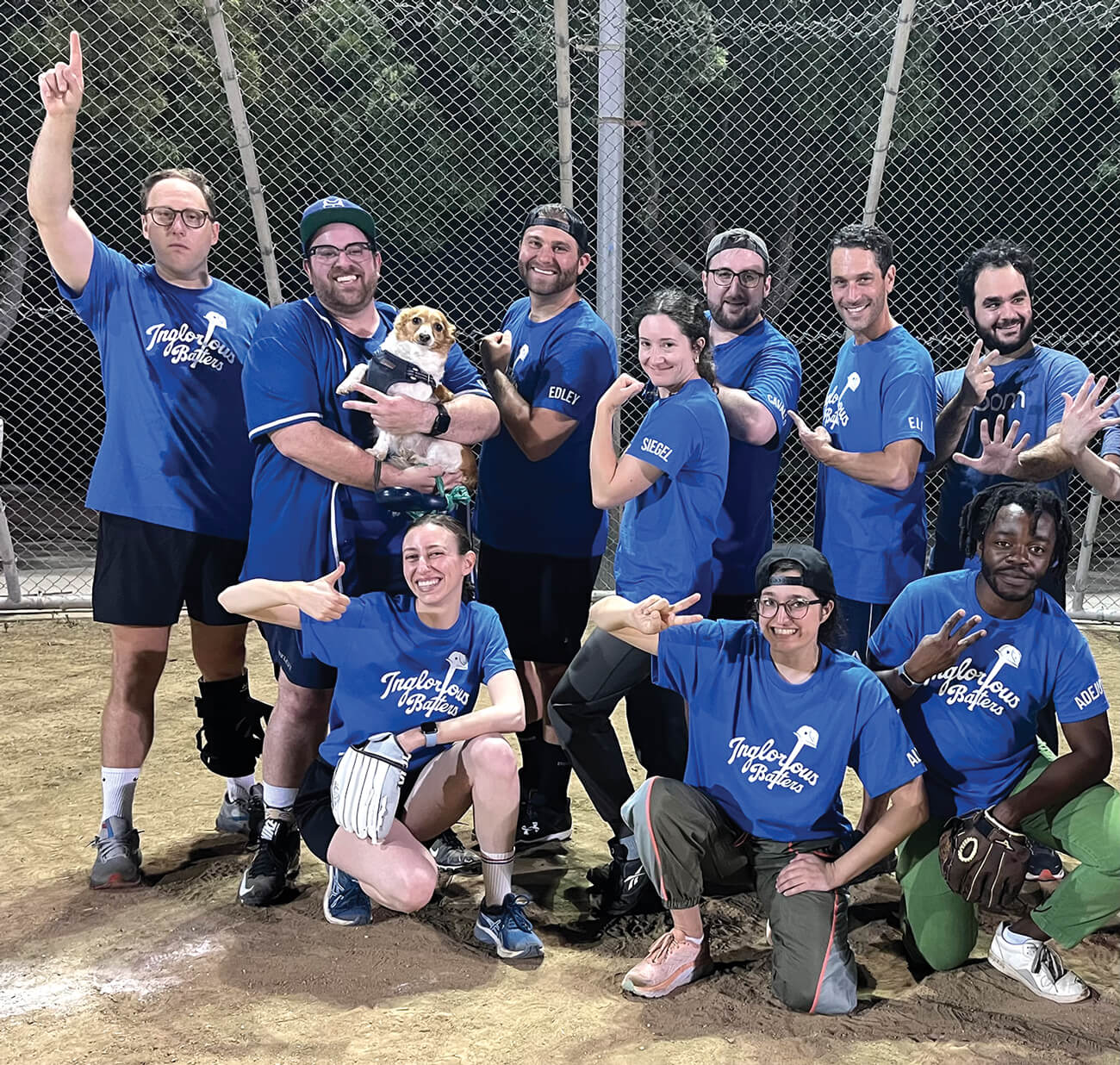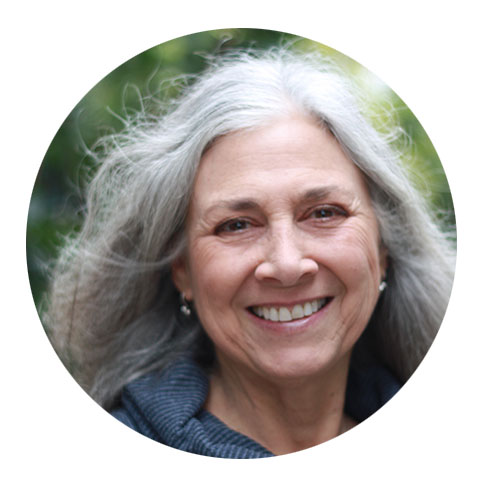The Topanga Historical Society Presents ‘1918-1919 Influenza Pandemic: An Historical Perspective’ | |
The Topanga Historical Society Presents ‘1918-1919 Influenza Pandemic: An Historical Perspective’The Topanga Historical Society (THS) will present its annual picnic as a virtual Zoom presentation, “Pandemic in Alaska, 1918-1919,” on Sunday, October 25, at 3 p.m. A link to the program will be provided on the Website: topangahistoricalsociety.org.
Program hosts are THS Emeritus member, Karen L. Wood Moran, with Michael Heumann and Mark Hein, who will trace the ancestral path of Topanga pioneers, Cy and Vera Wood, and, Cyril “CP” and Edith Wood, also two remarkable pioneers whose lives were forever changed by the 1918-1919 Influenza Pandemic. It’s a story about a quest that began in the Yukon Gold Rush of 1899 and ended up in Topanga 50 years later.
1918: A DREAM MEETS A PANDEMIC
A 20-year Grand Adventure in Alaska comes to an end.
On the 100th anniversary of my father’s birth in a remote Alaskan trading post, I set out to find the place. I hoped this would help me understand his decision, as an adult, to move our family into a roofless stone cabin in Old Topanga Canyon. What I discovered instead was gold—the story of my grandparents’ 20-year odyssey in the vast wilderness of Alaska during its Gold Rush era. Once I understood their long journey in search of a dream, abruptly ended by the Influenza Pandemic of 1918-19, I understood my father, and the life he provided for us.
—Karen L. Wood Moran Cyril (Cy), Charles, Mary, Cyril (CP), Edith, Patricia, Alfred, Richard, SF Peninsula, c.1928 |
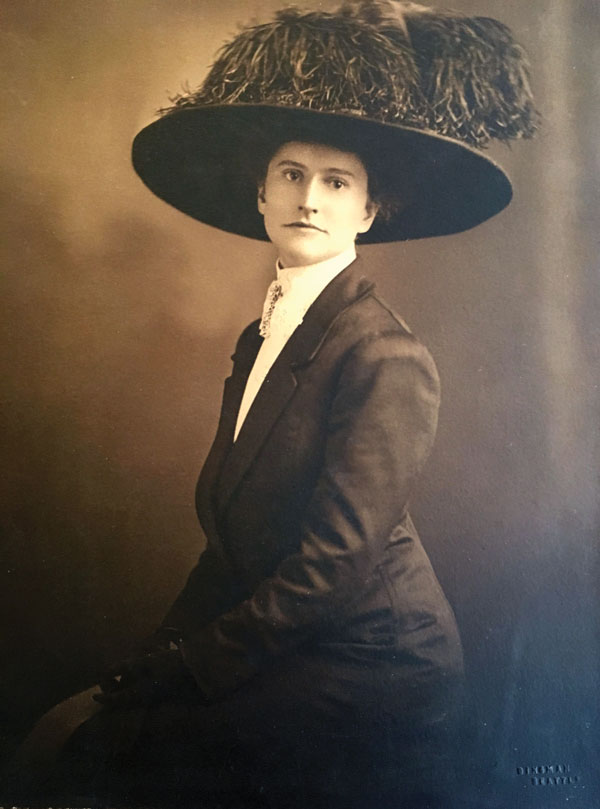 Edith Florence Chamberlain Wood, Seattle c.1909 MOTHER OF ALL PLAGUES
The global influenza pandemic of 1918-19 is known among scientists as “the mother of all plagues” for two reasons. First, the “Spanish Flu” infected one-third of Earth’s humans and killed 50 million of them. It was the worst pandemic since the Black Plague in the 1350s, which killed one-third of the human race.
Second, the 1918-19 flu virus was the fastest-moving, most biologically destructive one ever seen; all flu epidemics since, including COVID-19, have been caused by its direct descendants.
The Spanish Flu hit North America in three swift waves through spring, fall, and winter. Appearing in Kansas in March, it swept the Midwest and East, and went off to World War I in Europe with U.S. troops. It took doctors time to recognize this as a new flu, not the pneumonia outbreak they had already been fighting. It also took time for cities and states to beef up medical and public-health systems (Washington did nothing).
By June, the curve was flattening. Then, in August, with refugees and returning troops, the second wave hit. It spread like wildfire across the continent and into Canada and Alaska, many times worse than the first wave. Finally, by October, strict measures were taming it.
In November, World War I finally ended. People broke quarantine and spent weeks partying with returning soldiers and sailors. The third wave was upon the land and the pandemic didn’t end until early 1919. The virus, however, kept erupting for decades. Its last reported outbreak came in 1948, just before the Wood Family moved to Topanga.
—Mark Hein
 | 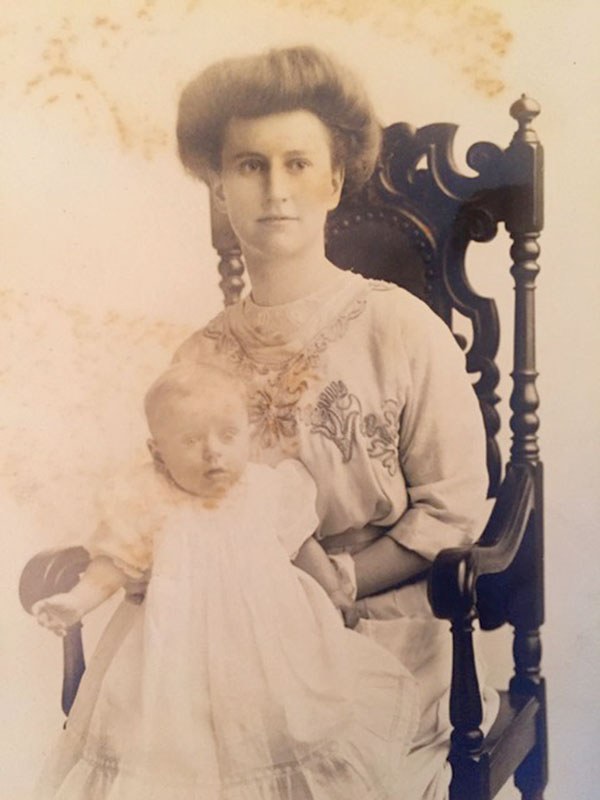 Edith Florence Chamberlain Wood, Cyril C. Wood (Cy), Susitna, c.1911
This is the story of two remarkable pioneers, Cyril (“CP”) and Edith Wood, whose lives were forever changed by the 1918-19 Influenza Pandemic that swept the world.
In early 1918, the couple had spent a decade living and working at remote sub-Arctic trading posts, when they were offered a post and home on temperate Kodiak Island, in the Gulf of Alaska. For CP, this culminated 20 years of strenuous effort, beginning with the Klondike Gold Rush. For Edith, it meant building a home of their own and sending their four children to a real school.
|  Cyril Percy Wood, Cyril C. Wood (Cy), Susitna, c.1911 KODIAK AND INFLUENZA
In 1917, San Francisco financier, W.J. Erskine, had purchased the Kodiak operations of the Alaska Commercial Company, the successor to Alexander Baranof’s famed Russian-American Company, founded 125 years earlier as Russia’s entry into the lucrative Alaskan fur trade. Its headquarters was on Kodiak Island, home to the world’s largest brown bears.
In February 1918, to lure CP away from Northern Commercial Company, one of the successors of the Alaska Commercial Company, a firm he’d spent 16 years helping to build—Erskine offered him the W. J. Erskine Company’s managing partnership and a 25% share. Late that summer, the Wood family eagerly made the grueling 1,200-mile journey by river, land, and sea, from Iditarod to Kodiak.
That November, the deadliest pandemic in modern history also arrived. Carried by Navy and merchant sailors, it began like a winter flu but quickly became a life-threatening pneumonia. The Wood children became ill, as did most of the town’s 600 people. Kodiak had no doctor, so CP and a friend borrowed a small boat and sailed 650 miles across the Gulf, through winter storms, to Sitka. There they found a doctor and sailed back to the stricken island. All four Wood children survived, though eight percent of the island’s people did not. Shaken by this terrifying encounter, Edith insisted the family return south. CP agreed, and in early 1919, just months after they’d arrived, they gave up the partnership and their dream home. The Wood family’s grand Alaskan adventure was abruptly ended.
 | 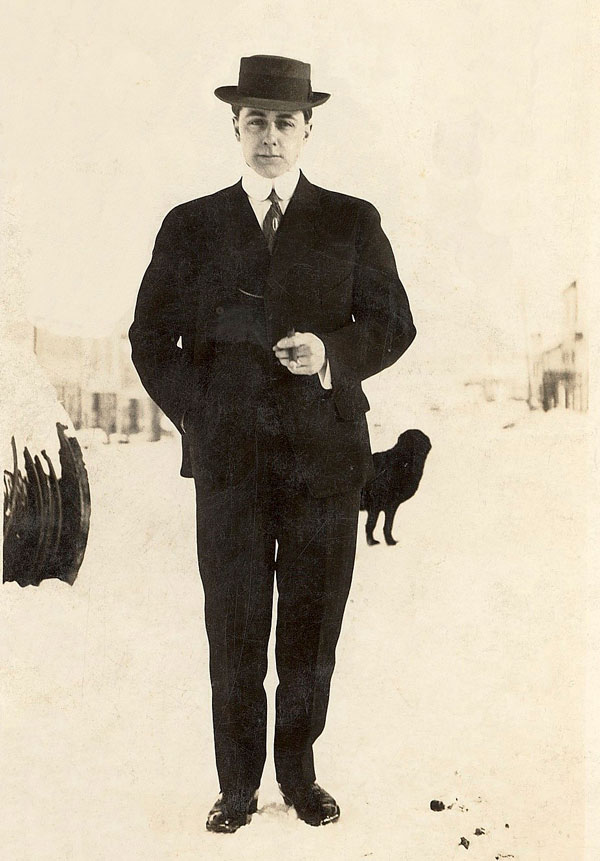 Cyril Percy Wood, Iditarod, c.1912
Twenty years earlier, at 16, CP had traveled north by steamship from San Francisco with his father, William Augustus Wood, to join the Yukon Gold Rush, leaving his mother and siblings at home. When the two reached Skagway, the railway was closed by severe winter weather (-60 degrees and snow slides). Their only option was to set out on foot. With a friend named Blatt and a pack mule, they hiked over White Pass to the Yukon’s River’s headwaters, then downriver to Dawson City.
They sought out roadhouses each evening after bone-chilling hours tramping the rugged terrain. Slowed by the mule and the onset of frostbite, the weary trio were constantly fooled by mirages, making them think they were much farther along than they were. The most arduous part of the journey, they agreed, was the 35-mile trek across frozen Lake LaBerge.
When they finally reached Dawson City, after more than 500 miles, it was an inspiring sight. The air was filled with the sights and sounds of 35,000 frontiersmen frequenting dance halls, banks, casinos, and outfitters. But the Gold Rush was already slowing. Mines with enough gold to work were all staked and claimed. However, CP noticed, support services were flourishing. So, while Augustus trekked 600 miles downriver to look for gold in Koyukuk, young CP opened his first business, a shoeshine stand. Soon he was taking odd jobs for local businesses while running his own. Gregarious and enterprising, CP became known as honest and reliable. Within three years, he was secretary to the Vice President of the Northern Commercial Company. | 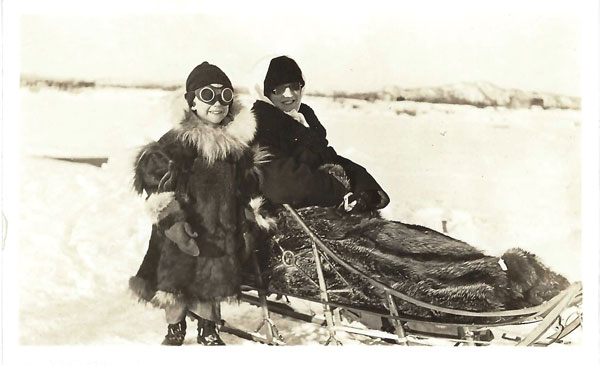 Cyril C. Wood Cy), Edith Chamberlain Wood, Iditarod, c.1915 The Company (through its predecessor) had begun operating stores in Alaskan villages in 1868 and boomed during the Klondike Gold Rush (1897-99). Its store would often be the village courthouse and the post office as well. Few miners or Native people had cash, so the stores took gold, fish, and furs in exchange for merchandise (hence the name “trading post”). By 1900, Northern was one of the largest trading companies in the Northwest.
CP, as a trusted “company man,” traveled far and wide on inspection tours of the wilderness posts. In 1906, at age 23, he was one of the youngest agents ever to establish a Northern Commercial trading post. It was in Caro, above the Arctic Circle, near the Chandalar River. However, the region’s gold veins did not pan out. Scattered trappers and frontiersmen could not support the post’s operation. Within two years, CP was told to close up shop, collect the debts, and report to the office in St. Michael, 650 miles west.
CP first went to the Chandalar diggings, to collect debts. He and an old timer named Charles Youngberg poled their boat and gear 65 miles to Coldfoot, then portaged for two days to Big Creek. Over the next two days, CP collected 40 pounds of gold dust, strapped it on his back, and headed back alone, without a guard.
 | 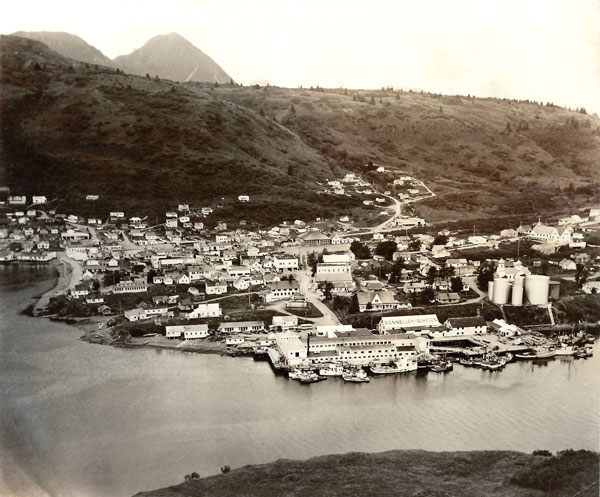 Kodiak, Alaska As he set out, a man shouted, “Watch out for my dog Shep! He’s been missing several days. If you find him, hand him over to a Japanese fisherman named Wada once you reach the river.”
CP hiked along the trail carrying gold dust, food, and a blanket. His vision obscured by a ground mist, he suddenly slipped into a large hole in the middle of the trail. Instinctively, he grabbed a tree root and caught himself. Then he heard a feeble whine. Peering closely, he saw a bone thin Shep, trapped eight feet down in the miner’s pit, too weak to climb out. CP notched a tree limb into a ladder and climbed down. The dog’s joy at being set free was unbounded. CP and his newfound companion set out for Caro, where he could feed Shep and rest. But the fog grew thicker, obliterating the trail and landmarks. They were lost.
CP made a fire and boiled tea, cooked rice and bacon for Shep, and waited for the fog to lift. When it did, he looked around and saw that he had been traveling in the wrong direction. As he backtracked, he told Shep, “This mistake nearly killed me, but it saved your life!”
Once in Caro, CP left Shep with Wada. Setting off down the river in a stout Peterborough canoe, he was surprised to see Shep jump in the river, swim out, and try to climb in. Wada had to pull the dog back to the shore, and CP was overcome by tears.  | 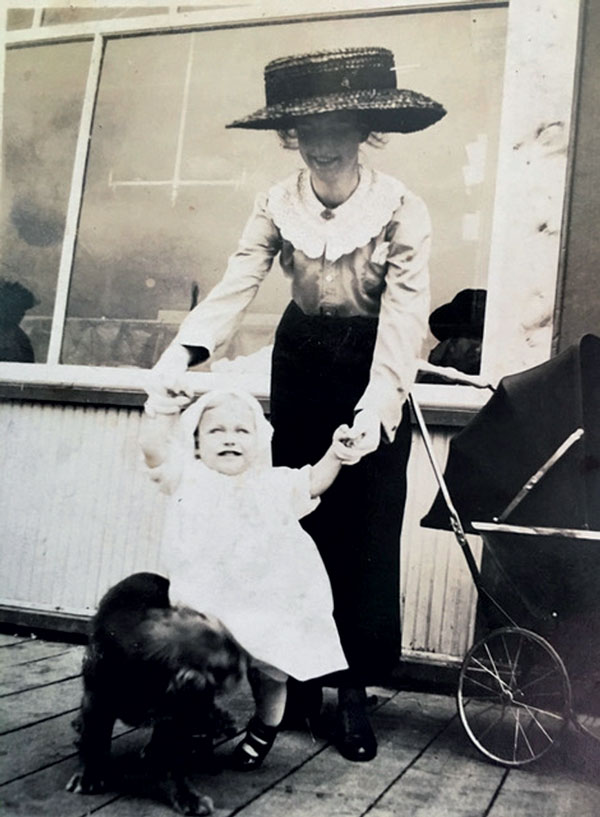 Cy and Edith Wood. With a last look at the now-closed trading post where he had spent two years, he went on to a Native village. There he hired an Athabaskan friend, Gilbert, to guide him across the lakes and waterways to Fort Yukon. Then he proceeded alone to St. Michael. There the company asked CP to set up and run a trading post at Susitna Station, about 40 miles north of Cook Inlet. He jumped at the chance, but, first, he had a more personal mission.
Eager to meet a young woman his sister Helen had been writing about, CP hopped a steamship to Seattle. There he met Edith Florence Chamberlain, youngest child of a notable family. Well-educated, she was trained as a concert pianist, and proud of her Mayflower ancestors and her father’s Civil War service. But Edith was painfully shy. Helen believed Edith would make a good wife for her older brother, and she was right. In three weeks, on November 6, 1909, CP and Edith wed at Seattle’s Trinity Parish.
Now a married man, CP returned to Susitna to create a trading post and a home. Edith stayed in Seattle with her brother, Charles, and his wife, Alicia. Charles had established a merchant store, C.W. Chamberlain & Co, on the Seattle waterfront and was familiar with Alaska. He, too, had headed to the gold fields at the turn of the century and, like CP, seized the opportunity to provide supplies to the booming territory.
On Christmas Eve, CP’s mother died unexpectedly. Upon hearing the news, his father, Augustus, gave up searching for gold and left Alaska for Australia, where he would remain for the next 30 years. Edith brought her husband’s younger siblings into Charles and Alicia’s home.  | 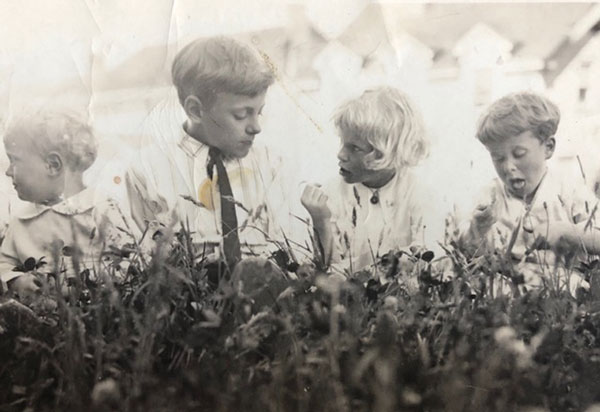 Alfred, Cyril (Cy), Mary & Charles, Seattle, c.1919 In May, Edith joined her husband in Susitna, in a log cabin on the river. Soon they were hosting anyone in need of food and shelter. Edith would sometimes cook and feed up to 24 frontiersmen a day, while working alongside her husband at the trading post. The Wood’s first child, Cyril Chamberlain (“Cy”) was born March 1, 1911, the first non-Native child recorded among the Athabaskan peoples of the Susitna Region.
When young Cy was three months old, the Company reassigned CP to be the manager in Iditarod, a much larger, more established trading post in the southwest interior. The family set out in June for the arduous journey and lived in the Iditarod Trading Post’s upstairs flat for the next seven years. One of their long-term guests was Sydney Laurence, who later became known as Alaska’s Premier Painter. Mary Wood was born in 1915, Charles in 1916 (in Seattle, while Edith visited family), and Alfred in 1917.
| 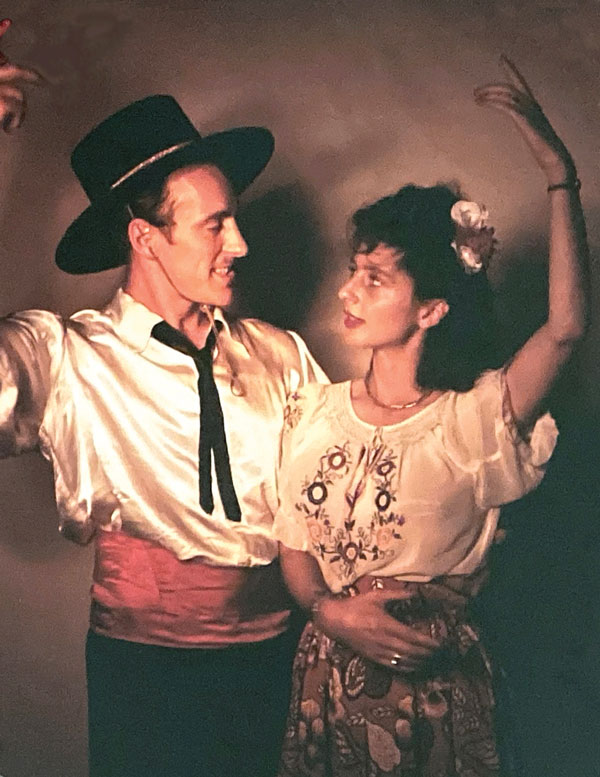 Cyril C. Wood, Vera Titmus Wood. Folk Dancing in San Francisco, c.1940 EPILOGUE: A NEW LIFE IN THE LOWER 48
Driven from Kodiak Island by the Influenza Pandemic, CP and Edith and their four children arrived in Seattle in early 1919. They stayed briefly with cousins, then set up home in a tent cabin on the beach at Puget Sound. Ever the pioneers! Two years later, they relocated to the Peninsula, south of San Francisco, where CP bought Edith their very first home.
Twenty years later, during World War II, their oldest son, Cy, met Vera Marguerite Titmus, a beauty from England, while folk dancing in San Francisco. Cy and Vera married in 1942, moved to Santa Monica, and had three children. In 1949, they moved into an old, roofless stone cabin in Old Topanga Canyon to raise their family. Seven years later a fourth daughter was born. Cy and Vera were artists and jewelers, marketing their jewelry throughout the United States and Europe under the name “Cyvra” (for Cy and Vera). One of Cy’s special talents was casting gold – a link to his father’s adventurous years in Alaska’s gold rush trading posts. n
—Karen L. Wood Moran & Michael Heumann
 | | | | | | |
|
|
|
|
|





